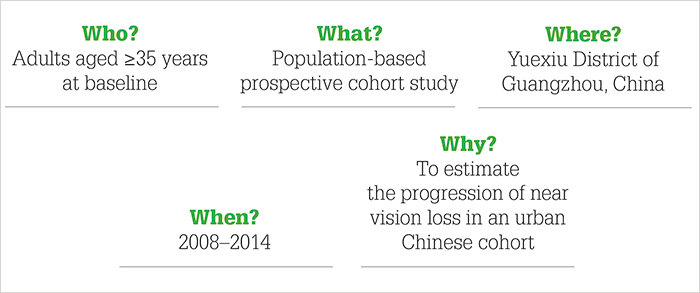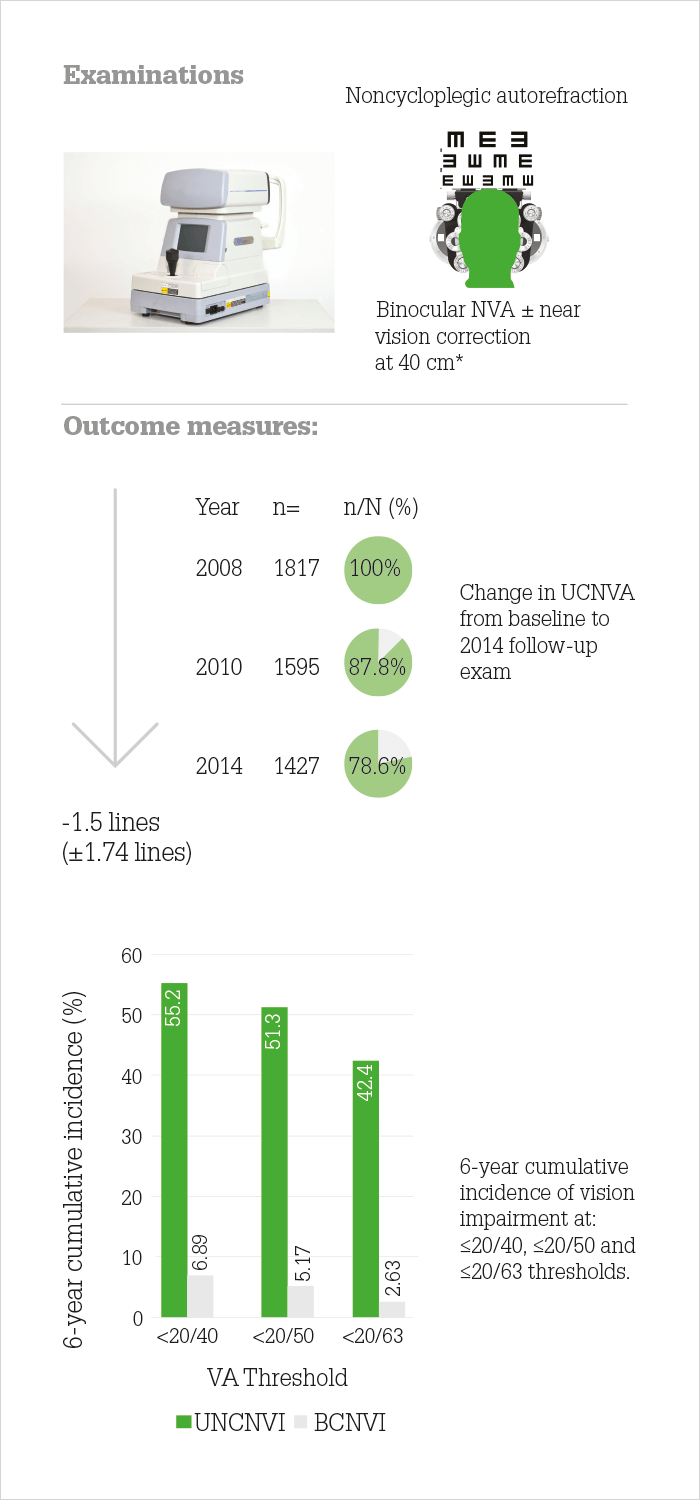
Presbyopia correction is one of the largest untapped elective ophthalmic surgery markets. Given the fact that near vision impairment (NVI) – the most common early presentation of presbyopia – is estimated to affect 517 million people worldwide (1), you may be surprised that very little work has been done to characterize it over the years. NVI and presbyopia have a prevalence of 60 percent or higher in those aged 35 years or older – rising to 90 percent in those aged 70 years or older (2) – and are associated with worsening quality of life in both developed and developing countries (3). One country that particularly stands to benefit from characterization of NVI is China, where it is estimated that the number of people aged 65 or older will double in the next 20–30 years. To that end, Xiaotong Han and colleagues set out to characterize NVI incidence and progression in an adult Chinese population (4). Figure 1 shows what they did, and what they found.

References
- RE Kidd Man et al., “Prevalence, correlates, and impact of uncorrected presbyopia in a multiethnic Asian population”, Am J Ophthalmol, 168, 191–200 (2016). PMID: 27246256. M He et al., “Prevalence and correction of near vision impairment at seven sites in China, India, Nepal, Niger, South Africa, and the United States”, Am J Ophthalmol, 154, 107–116 (2012). PMID: 22534109. PJ McDonnell et al., “Associations of presbyopia with vision-targeted health-related quality of life”, Arch Ophthalmol, 121, 1577–1581 (2003). PMID: 14609914. X Han et al., “Progression of near vision loss and incidence of near vision impairment in an adult Chinese population”, Ophthalmology [Epub ahead of print] (2017). PMID: 28336059.
